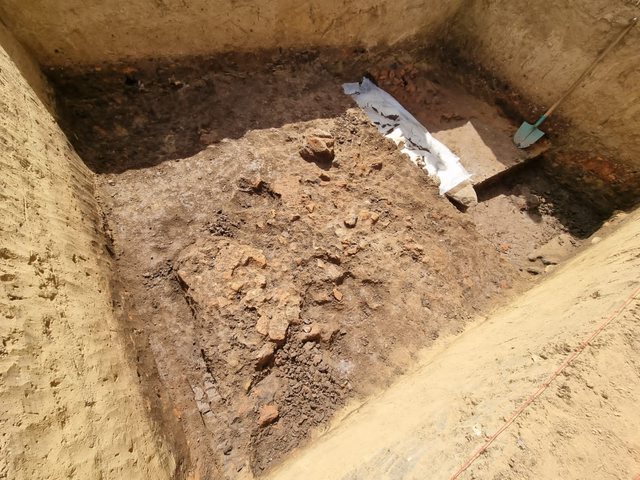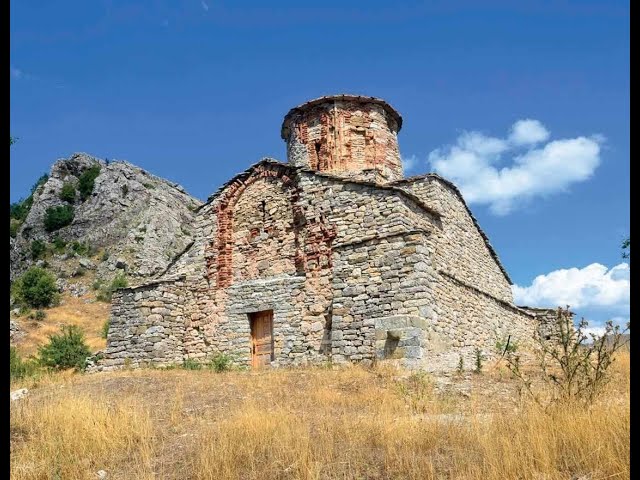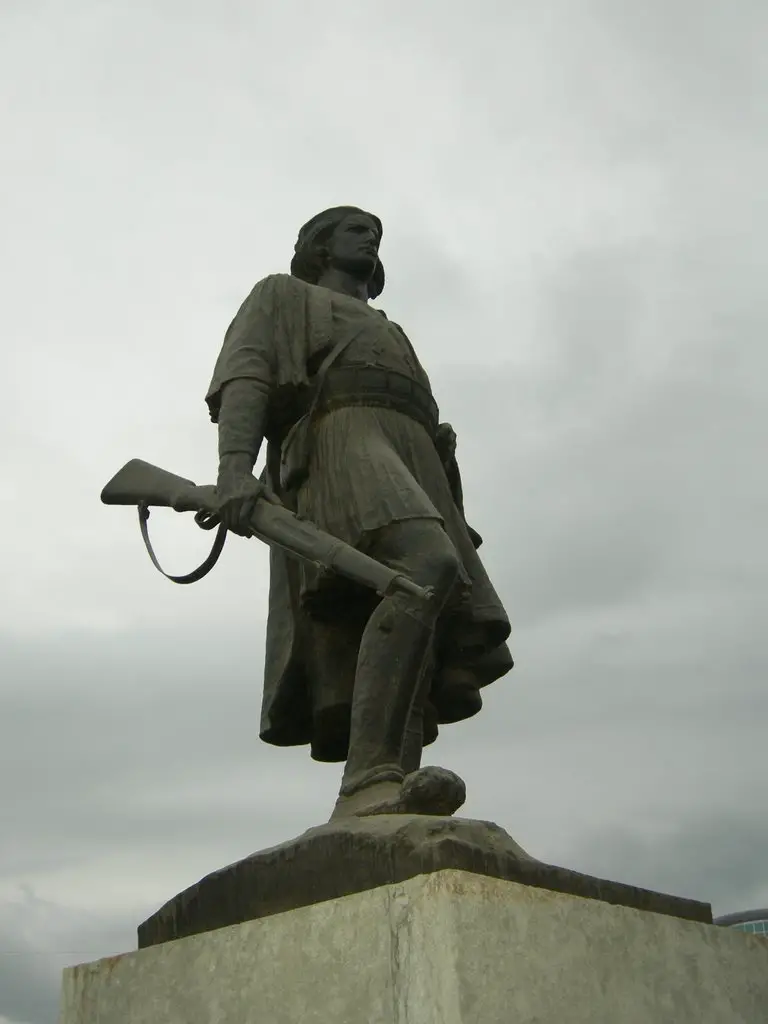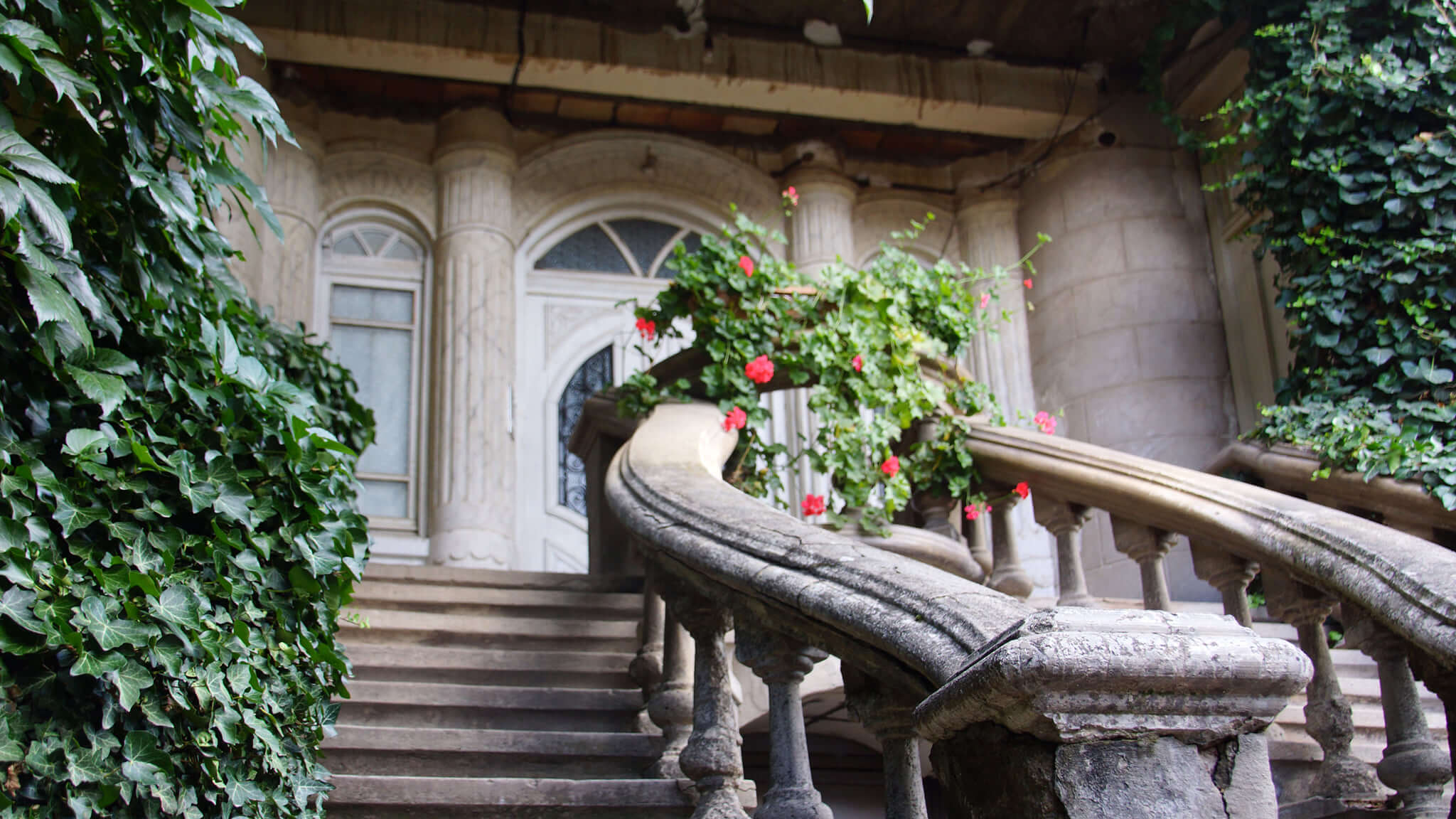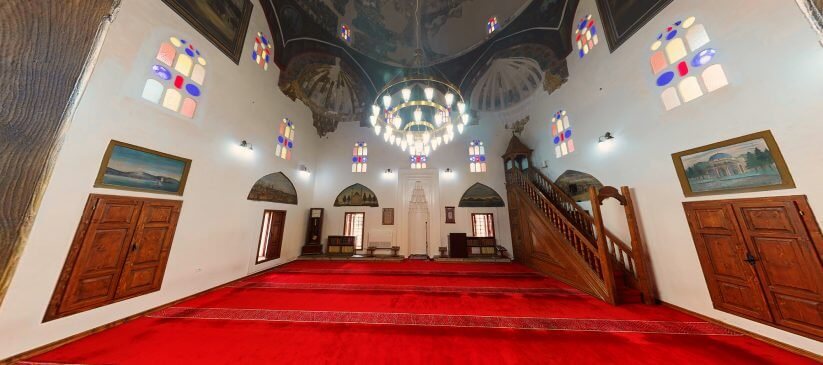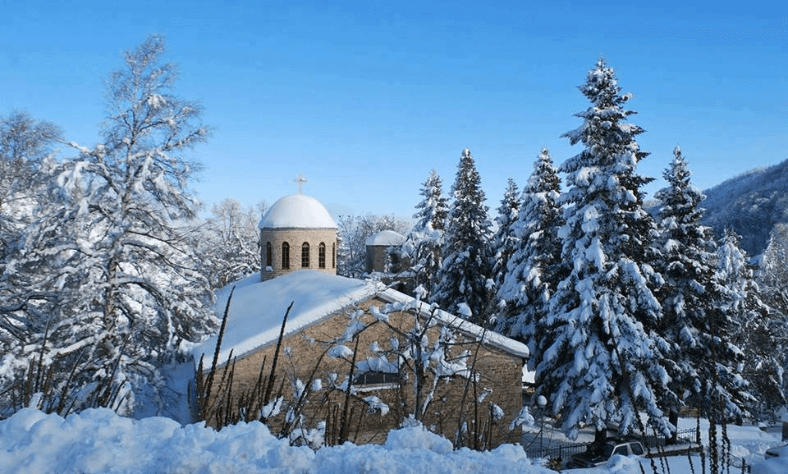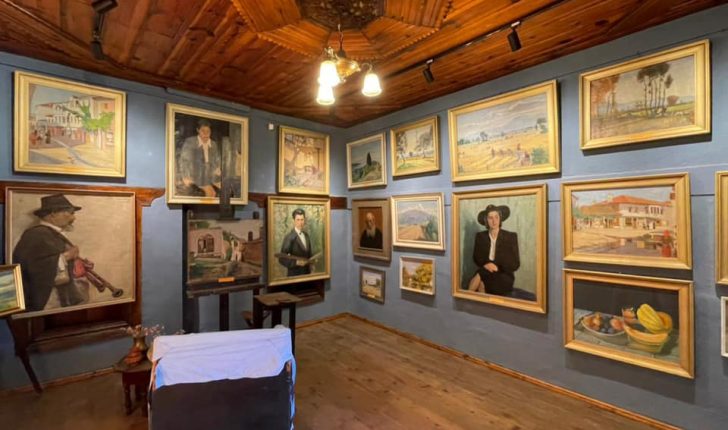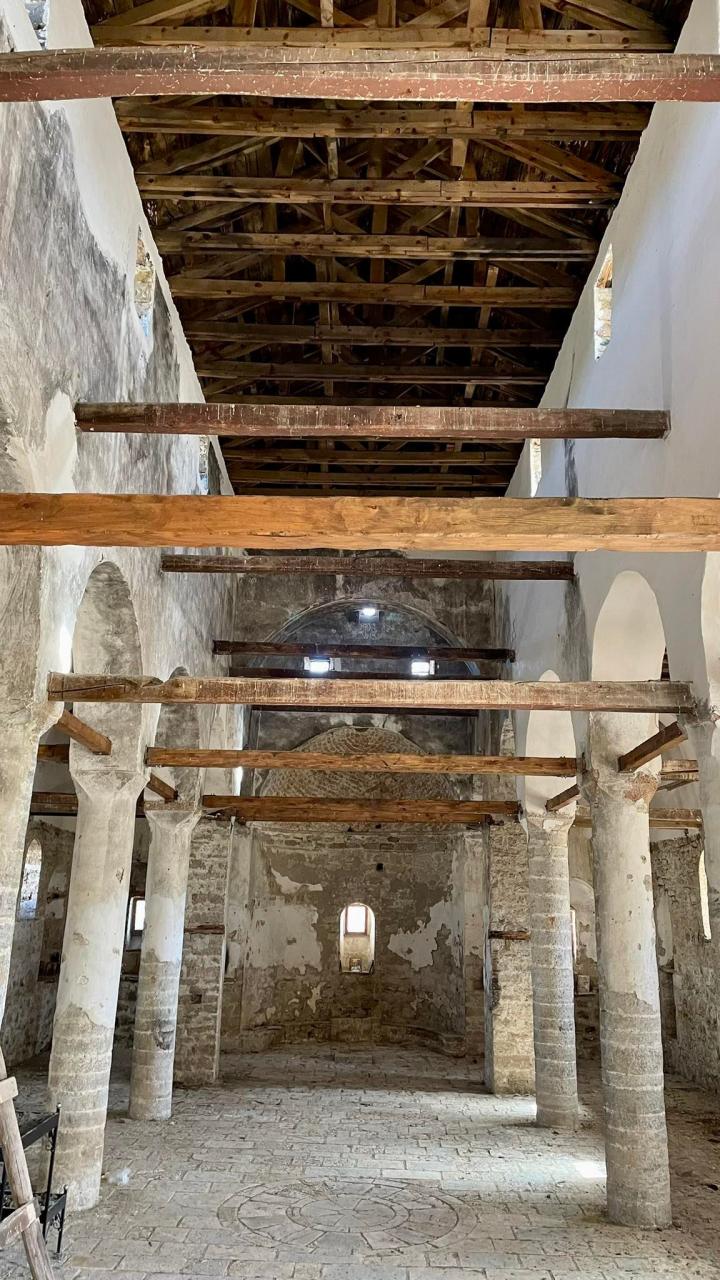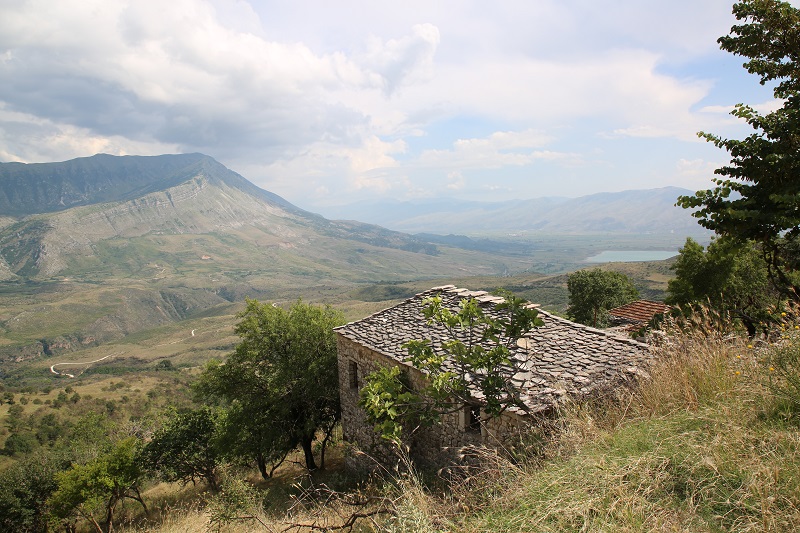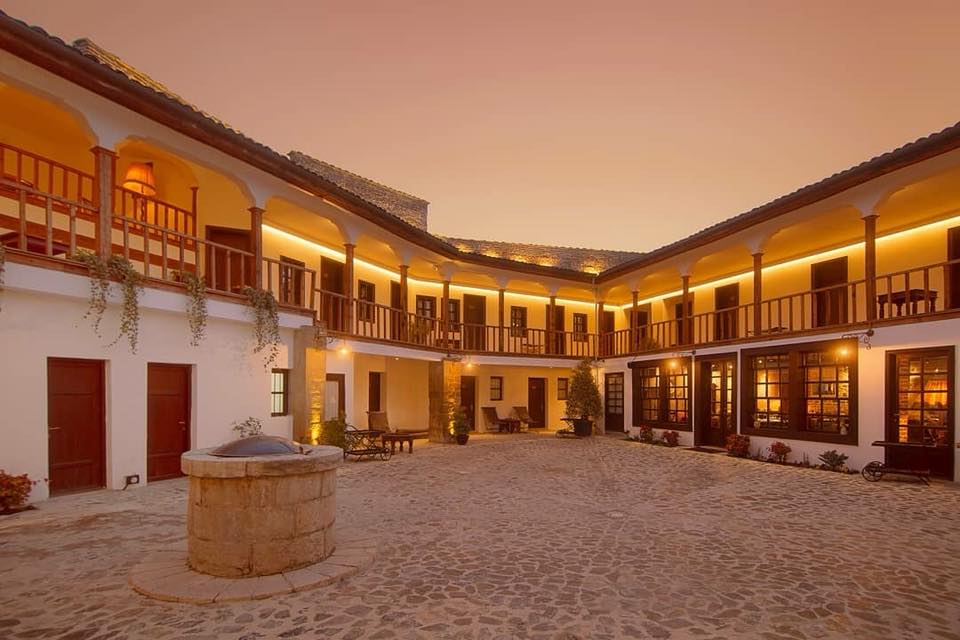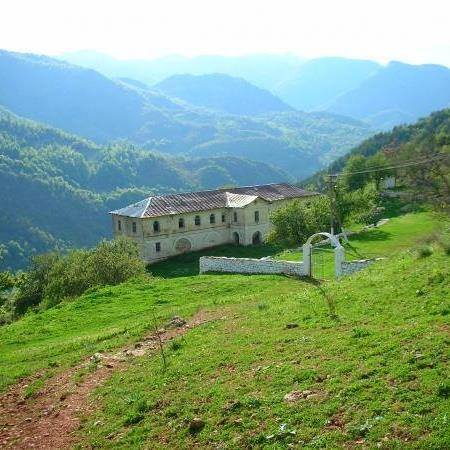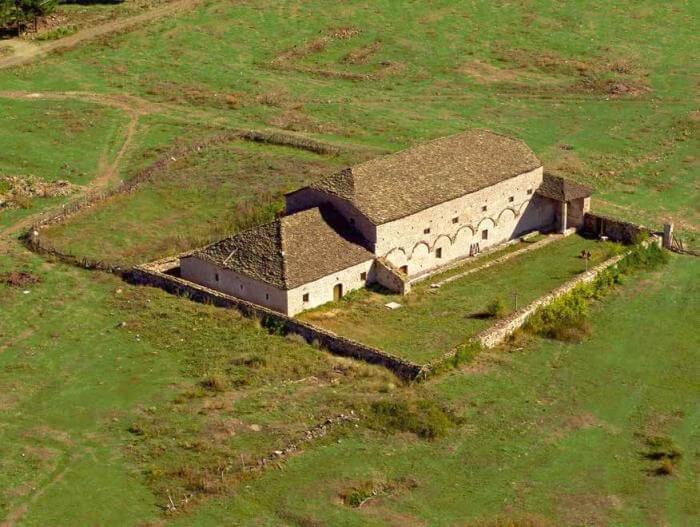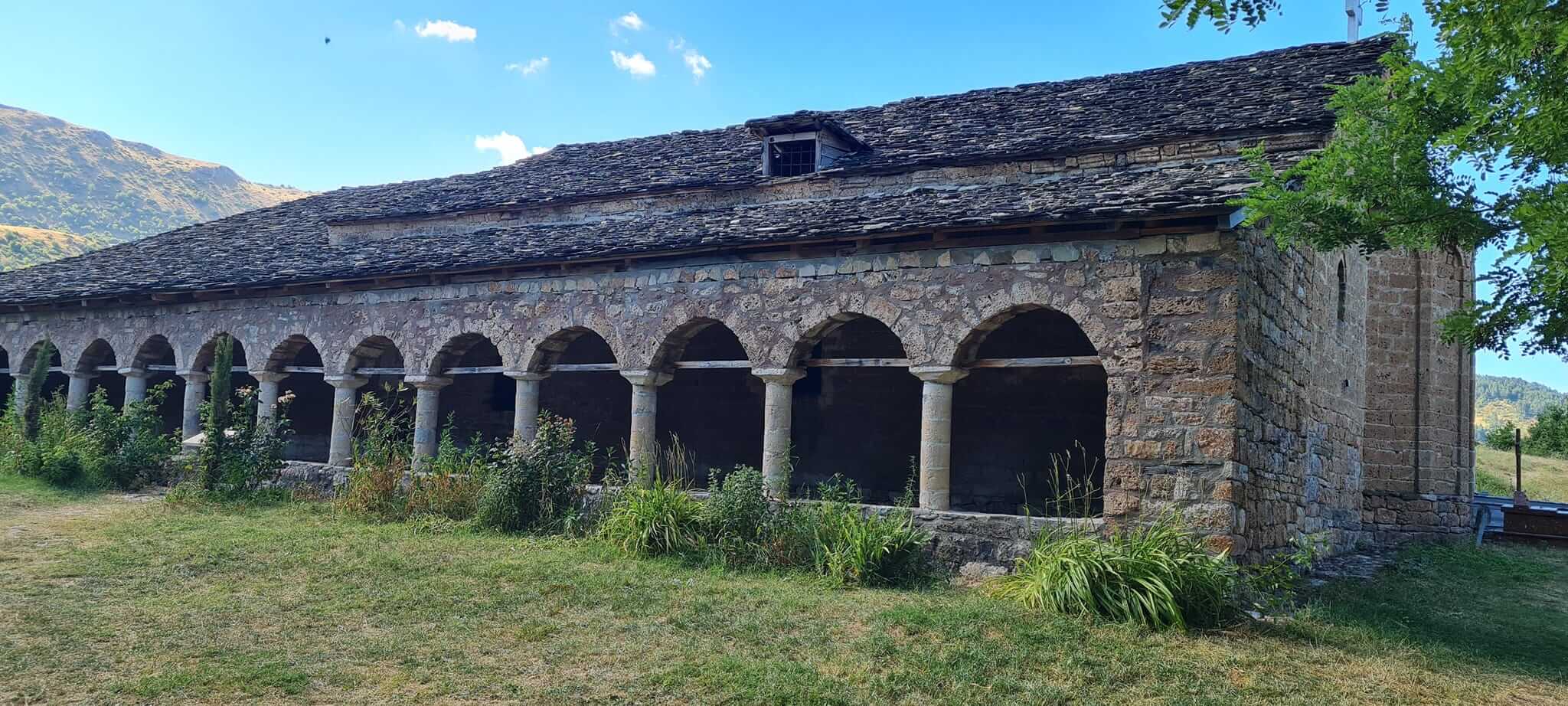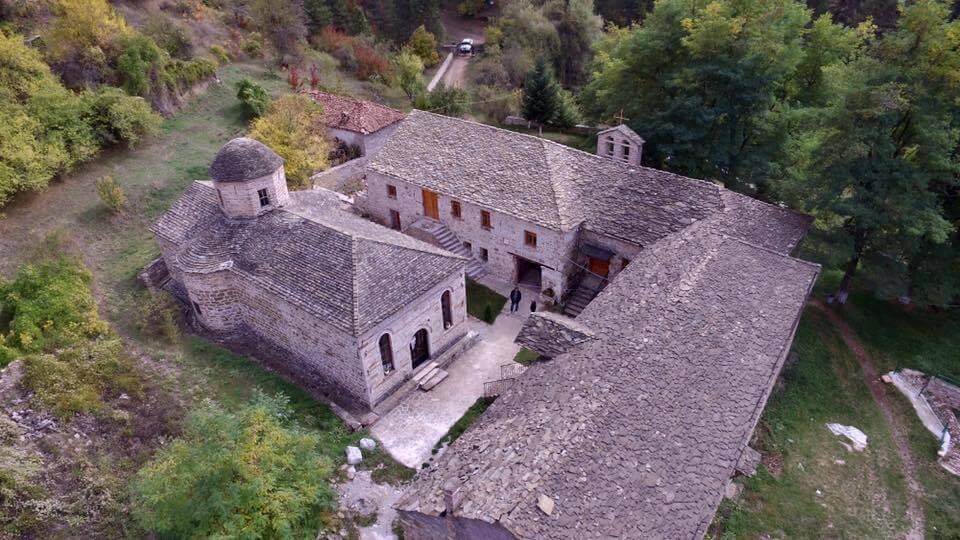Cult Points
Golik Bridge, Pogradec
The Golik bridge is located over the river Shkumbin in the village of the same name Golik, 40 km from Pogradeci. The bridge is an archaeological site, a work of art of the old road "Via Egnatia".
It was built in the II century and is classified as a cultural monument. The bridge is 17 m long, 3 m wide and 10 m high. It consists of two semi-circular vaults with a discharge window between them. In
Cult Points
Prehistoric Settlement Lin, Pogradec
The prehistoric settlement is located in the village of Lin, on the western shores of Lake Ohrid, 20 km from the city of Pogradec. This 7,500-year-old "stilt" settlement in Lin is an impressive archaeological discovery. It is thought that this unearthed settlement dates back to 7,500 years ago.
Other impressive archaeological discoveries shed light on the early settlements in the Albanian territo
Cult Points
Church of Saint Triadh, Tudar of Opar
The Church of Saint Triadh is a cultural heritage monument in Lavdar of Opar, Korça.
This monument is of the "Architecture" type, approved in January 1963.
Its typology is a church with a cross-shaped cover, built in the Byzantine period in 1497, around the 15th century.
Cult Points
Church of Ristoz, Mborje
Ristoz Church is located at the foot of the Morava mountain, southeast of Korça. The church is a monument of cultural heritage in Mborje, of the "Architecture" type, approved in March 1948 and September 1971. Its typology is a church of the post-Byzantine period, built around 1389, in the XIV century.
The church is dedicated to Saint Mary. It is one of the cult objects that was built earli
Cult Points
Saint Jovan's Church, Boboshtice
The Church of St. Jovan Boboshtice is located in Boboshtice, Korça. Based on the construction technique, the material used for construction and other data, it is thought that the church was built during the second half of the 14th century.
The church is composed of the nave and the narthex which was built at a later time. The interior walls of the church are painted and its height is about
Cult Points
National Warrior Monument, Korça
The National Warrior Monument is located in the center of the city of Korça. It is a monument of cultural heritage, approved in January 1963.
It is otherwise known as the "Statue of the National Warrior" which was built for the Korça patriots who took part in the liberation of the country from the Ottoman invaders during the years 1906 - 1912.
This work is by the prominent Albanian
Cult Points
Villa Polena, Korça
Vila Polena is a monument of cultural heritage in Korça.
This monument is of the "Architecture" type, approved in September of 2007. Its typology is a dwelling, built in the XX century.
This villa is a large, three-story building and is located on Lemi street, in Korça.
Cult Points
Iljaz Bey Mirahor Mosque, Korçë
Iljaz Bey Mirahor Mosque is a cultural heritage monument in Korça. This monument is of the "Architecture" type, approved in March 1948 and September 1971. Its typology is a mosque, built in the Ottoman period in 1495 - 1496.
The mosque was built by Iljaz bey Mirahori in his waqf, this is an indication of the first waqf in Albanian lands and the first mosque with a dome built in Albanian la
Cult Points
Iconostasis of the Church of Saint Gjergj, Dardha
The iconostasis of the church of Saint George is a cultural heritage monument in Dardha, Korça.
This monument is of the "Architecture" type, approved in May 1970.
Its typology is the iconostasis, from 1907, in the 20th century.
Cult Points
Andon Zako Çajupi Theater, Korça
The Andon Zako Çajupi Theater is located on the main boulevard of Korça, "Gjergj Kastrioti". The city theater was founded in 1951. Today, the theater building serves as a cultural home for professional artists from the south of Albania.
In the institutional records of the time after the second world war, the year 1950 is noted, but the theatrical activity was developed in this space
Cult Points
House Museum of the Painter Vangjush Mio, Korça
The house museum of the painter Vangjush Mio has been declared a cultural monument. It contains about 40 oil paintings, landscapes, still lifes and many drawings which are remarkable for their very special style.
The museum house is a center created in 1945 and renovated in 1995. It is an important part of the city of Korça, where various cultural and artistic activities take place: such a
Cult Points
Shëndelliu Church, Voskopoja
Shëndelliu Church is a cultural heritage monument in Voskopoja, Korça. This monument is of the "Architecture" type, approved in January of 1963. Its typology is a church, built in the post-Byzantine period, around the 18th century.
It is known differently as the church of Saint Ilias, built in 1751. The church is of the basilica type and is divided into three naves with two rows of co
Cult Points
Saint Mary's Church, Voskopoje
Saint Mary's Church is a cultural heritage monument in Voskopoja, Korça. This monument is of the "Architecture" type, approved in March 1948 and September 1971. Its typology is a church, built in the post-Byzantine period.
The church is otherwise known as "The Dormition of Saint Mary". It is the largest church in Voskopoja, which served as the cathedral of the former city. It was built aro
Cult Points
Church of Saint Kolli, Voskopoje
The Church of Saint Kolli is located in the center of Voskopoja, near Korca. The church is a monument of cultural heritage, type "Architecture", approved in March 1948 and September 1971. Its typology is a church, built around 1721.
It is an Orthodox church and most important for its architecture with all the elements of the post-Byzantine period and the quality of the painting, which has survive
Cult Points
Prophet Ilia Church, Stegopull
The Church of Prophet Ilia is a cultural heritage monument in Stegopull, Gjirokastra. This monument was approved in June 1973. Its typology is a church, built in 1624.
The church has undergone restoration, specifically work has been done on the structure of the roof of the vestibule on the west side, the cleaning of the surrounding territory, the stabilization of the structure of the masonry as w
Cult Points
Elbasan Han, Korçë
Elbasan Han is a cultural heritage monument in Korça. This monument is of the "Architecture" type, approved in June 1973. Its typology is an inn, built around the XIX century.
The Han is a two-story building, about 7 m high. In it there is a courtyard from which the balcony of the inn unfolds. The second floor balcony consists of many columns and wooden railings. While upstairs are t
Cult Points
Saint Marena Monastery, Pogradec
The monastery of Saint Marena is located in the north of the village of Llenga, in Pogradec. The church is a monument of cultural heritage, type "Architecture", approved in October 1948.The church has a dominant view on the top of the mountain, over the river Shkumbin. It is a small building, approximately 8-12 m long. The iconostasis is made of wood and carved with floral motifs. It has a width o
Cult Points
Saint Mihill Church, Voskopoje
Saint Mihill's Church is a cultural heritage monument in Voskopoja, Korça. This monument is of the "Architecture" type, approved in March of 1948 and in September of 1971. Its construction was completed around 1722. It is a three-nave basilica type church, with dimensions of 33 x 15 x 9 m and supported in two columns.
The columns are connected between them by arches in both directions, whi
Cult Points
Shen Mehill Church, Vithkuq
Shen Mehill Church is located in Vithkuq Village. The church is a cultural historical monument of the "Architecture" category, with approvals in March 1948 and September 1971. It is one of Vithkuq village's biggest churches, standing around 8 meters tall. Mihaili and Gabrieli began building in 1682. The Christians of Vithkuq, the priest Stavri, and the Metropolitan of Kosturi all contributed to it
Cult Points
Monastery of Saint Podhrom, Voskopoje
The Monastery of Saint Podhrom is a monument of cultural heritage in Voskopoja, Korça. This "Architecture" type monument was approved in March of 1948 and in September of 1971. It is also known as the Monastery of Saint John the Baptist. The monastery and the church located inside were built around 1632, according to the donor's inscription. While the painting of the Monastery was completed



